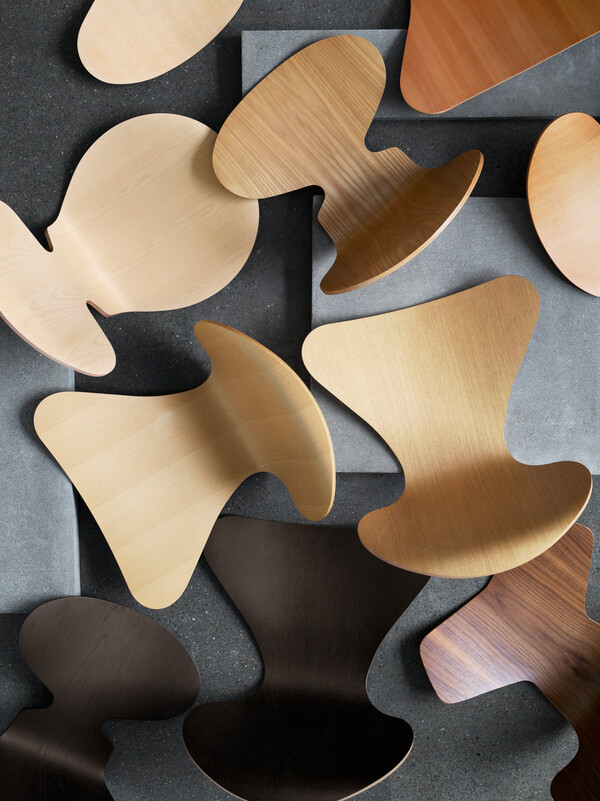The Series 7 Chair & how to spot a fake
Today we take a closer look at one of the world’s best-loved chairs, the iconic Series 7, and also look into how to spot a fake.
The Series 7 chair, also known as the Model 3107, was first designed in 1955 by Danish architect and designer Arne Jacobsen. A mid-century design with a nod to the modernist style which was popular at the time, the Series 7 was made using the same innovative technology used to create the Ant Chair three years previously.
The chair’s distinctive swooping curves and pinched waistline are constructed by pressure-moulding nine layers of wood veneer. This technique allowed the seat to be moulded to fit the body, creating a comfortable chair which negated the need for upholstery. The chair has a chrome four-legged base with rubber feet.
The Series 7 is now Fritz Hansen’s best-selling design, with over 5 million units sold to date, and is one of the most recognised, iconic chairs worldwide. It was propelled to stardom in the 1960s when model Christine Keeler posed on the chair for photographer Lewis Morley.
The Series 7’s practicality (lightweight and stackable), its distinctive silhouette and wide range of finishes have made it one of the most enduring designs of the 20th century. Gracing homes, businesses and numerous TV shows worldwide we can’t think of a more iconic chair to have around your dining table.
2012 saw the launch of a collection of new finishes and colours for the classic chair. Now available in 9 different types of wood - Maple, Ash, Beech, Cherry, Oregon Pine, Elm, Oak, Walnut and Dark Stained Oak – the Series 7 is also available in the following colours: white, light grey, dark grey, black, yellow, orange, red, petrol blue and sage green.
Unfortunately, as with many iconic designs, many copies have arisen in recent years. Cheap fakes and imitations are not something we tolerate here at Nest, so we want to highlight a few common factors that show the difference between a licensed original Series 7 and a fake.
How to spot a fake
- Fake Series 7s have a much thicker, and less subtly moulded, seat
- The ‘waist’ of the fake chair will be more pronounced than it should be and will often break at this point.
- There will be no unique ID number on the underside – something which all licensed originals have
- Fakes have much less strength and will snap under pressure
Thanks to the 2012 ‘Fight the Fakes’ campaign by Elle Decoration, it is now illegal to sell knock-off design classics in the UK. Backed by notable names such as Sir Terence Conran and Sir James Dyson – the campaign forced the UK government to change the law regarding design copyright, with new protections coming into force in 2017.
Previously, design works were only protected for 25 years after the issue date, compared to 70 years for literature, art and music.
Now with 70 years of protection, furniture design classics will receive the same protection as other creative industries. As a consequence, you will see fewer cheap reproductions of the true classics, with designs and designers getting the protection and recognition they deserve. Read more about the change in design copyright law here.








